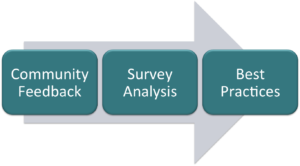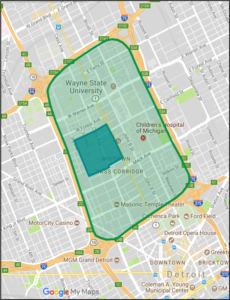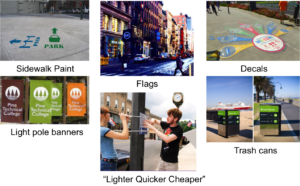The past few months, I have had the opportunity to work with Midtown Detroit Inc., a nonprofit planning and development organization, on my final Impact Project. I have admired this organization for many years, and as a happy resident of Midtown I have watched with great interest as the retail corridors around me have changed. Over the past year alone, I’ve witnessed six empty storefronts come to life with new retail and restaurants just within a few blocks of my apartment. As a rapidly developing district, there is a unique mix of long-time residents, mixed-income residents, newer residents (like me!), and a transitory student population. MDI is a key driver of economic development in the neighborhood, and my partners wanted to better understand the retail needs of the community and opportunities to meet those needs in an inclusive way. To guide this work, we established the following design question:
“How might we develop an inclusive retail strategy for the Midtown neighborhood?”
I approached this in 3 ways:

- I performed community interviews with around 20 residents and businesses in the target area (see below) to identify what was missing from the retail landscape and how businesses could better collaborate to create a cohesive and navigable retail district.

- I analyzed a 2017 that MDI conducted to get a broader understanding of the demographic makeup, retail use, and retail perceptions in the area.
- I conducted best practice research to identify wayfinding strategies that could further connect residents and visitors with businesses and strengthen the identity of Midtown as a retail destination. Check out this Urban Wayfinding Implementation Manual!

I’ve included some of my final recommendations below:
- Maintain a balance between small locally owned business and national retailers to serve the diverse preferences of new residents, long-time residents and visitors
- Promote future development in key retail corridors that fill the identified gaps in the retail environment, focusing on Cass, then moving out to Second and Third.
- Build awareness of how existing business are already meeting identified needs.
- Facilitate regular retail district promotional events and meetings for retailers to share their perspectives.
- Plan and implement low-cost wayfinding strategies to strengthen the identity of Midtown as a retail destination.
- Engage in regular community feedback exercises to keep a pulse on the needs of stakeholders.
